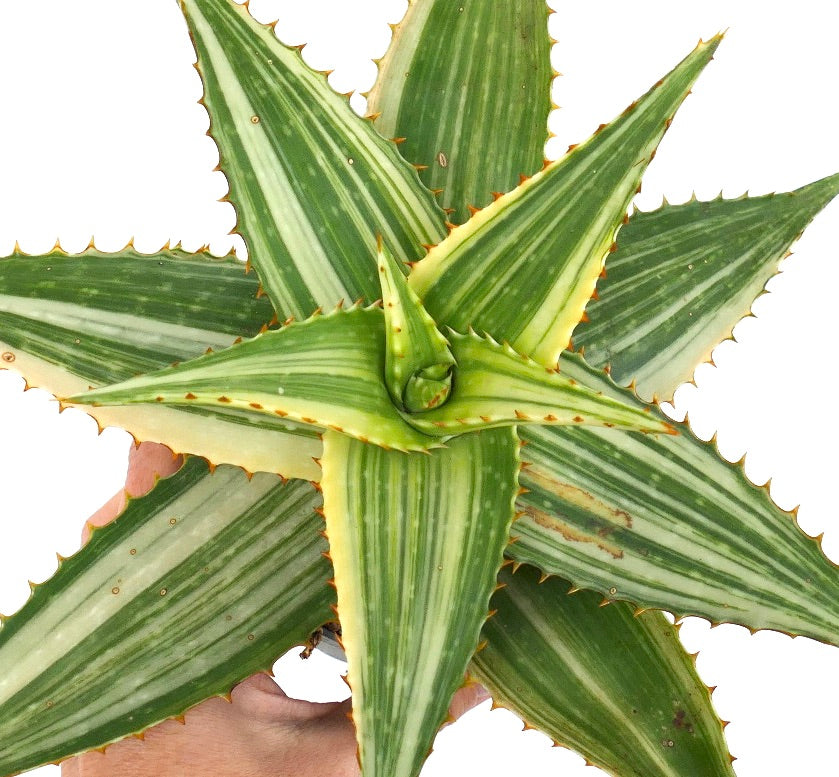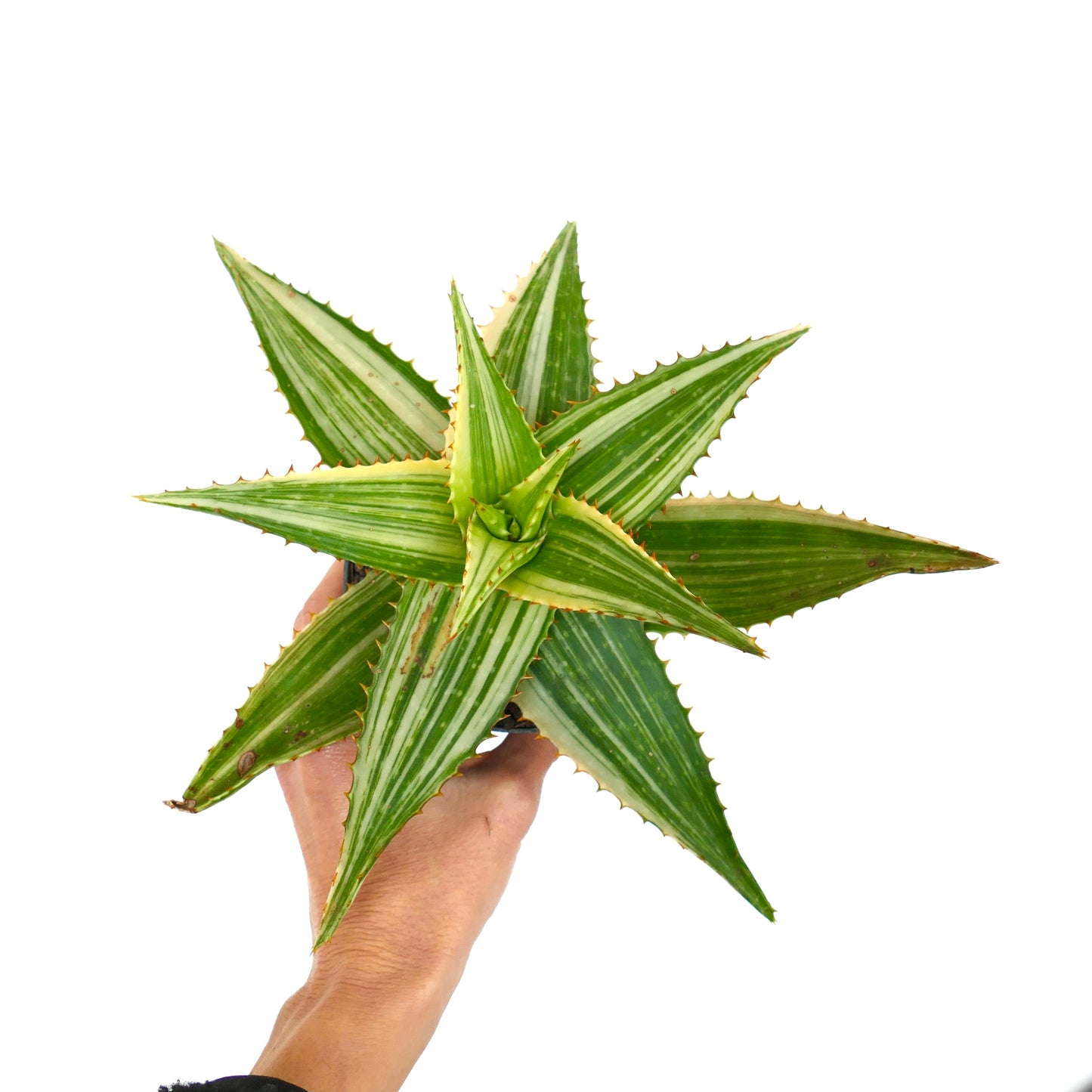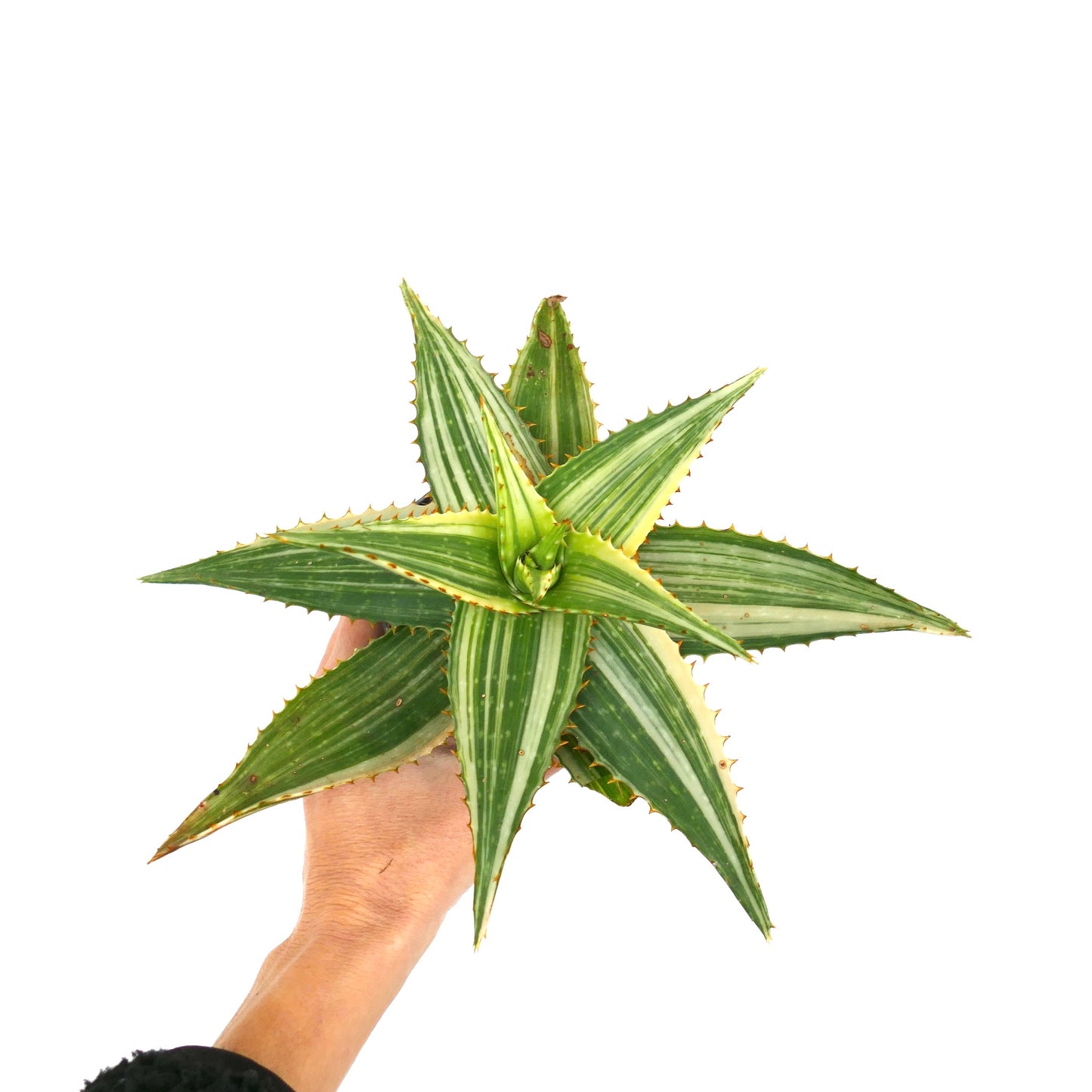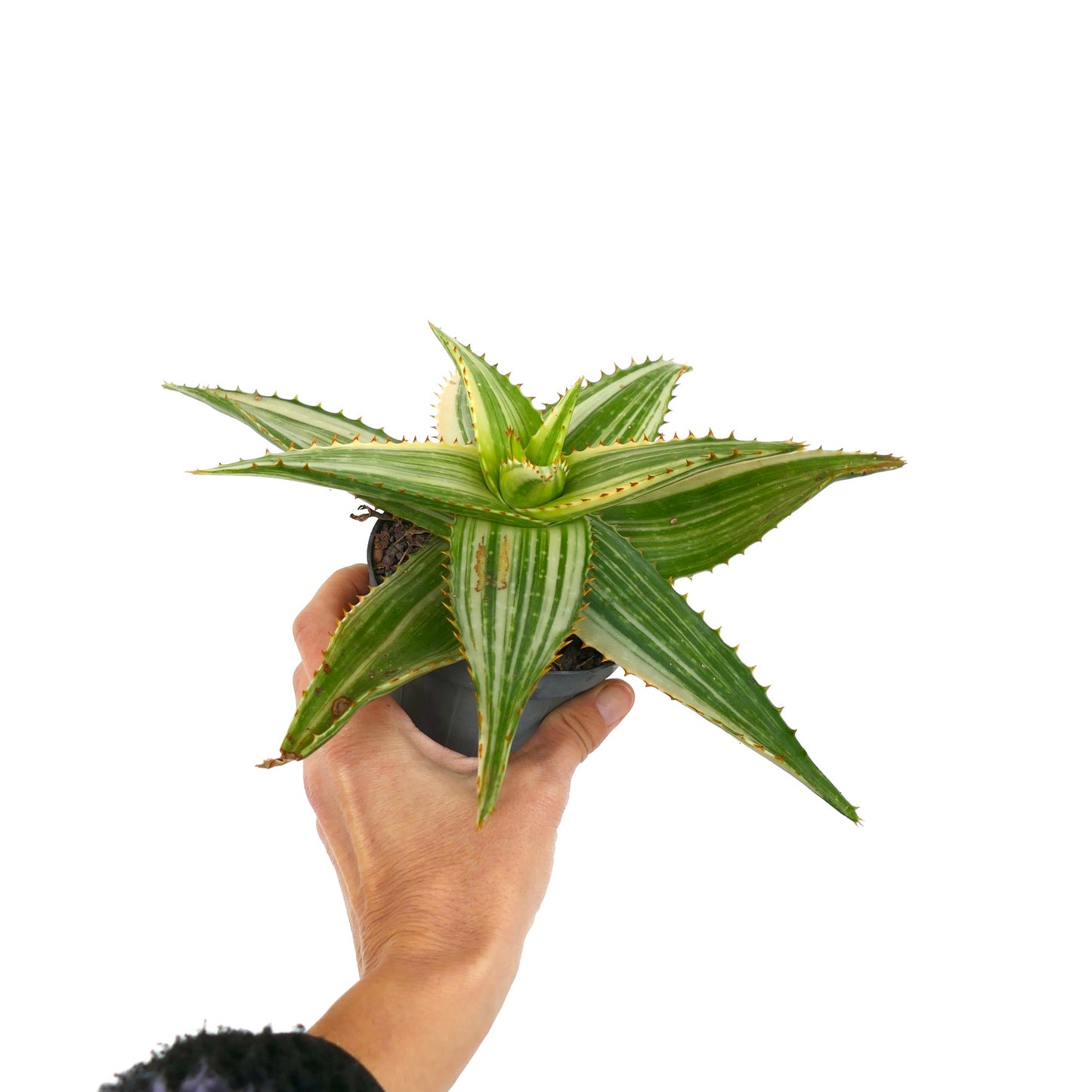- Single Specimen
Aloe saponaria VARIEGATED UV7T
Aloe saponaria VARIEGATED UV7T
Couldn't load pickup availability
Product Description
Aloe saponaria, commonly known as Soap Aloe, is a succulent plant native to South Africa. It belongs to the genus Aloe, which encompasses several species known for their medicinal and ornamental uses. Here's a description and some cultivation tips for Aloe saponaria:
Description:
-
Appearance: Aloe saponaria typically grows in a rosette form with thick, lance-shaped leaves. The leaves are usually green-gray in color and have small soft teeth along the edges.
-
Flowers: During the blooming season, which is typically in late winter or early spring, Aloe saponaria produces tall stalks topped with clusters of tubular orange-red flowers. These flowers are attractive to pollinators like bees and hummingbirds.
-
Size: It usually reaches a height of about 1 to 2 feet (30 to 60 cm) tall and spreads to form clumps over time.
-
Uses: While primarily grown as an ornamental plant for its attractive foliage and vibrant flowers, Aloe saponaria also has some medicinal uses. The gel inside the leaves is said to have soothing properties and is sometimes used to treat minor burns and skin irritations.
Cultivation Tips:
-
Light: Aloe saponaria thrives in bright, indirect sunlight. Place it near a sunny window indoors or in a location with partial shade if grown outdoors.
-
Soil: Use a well-draining potting mix tailored for succulents or cacti. Aloe saponaria prefers slightly acidic to neutral soil pH.
-
Watering: Like most succulents, Aloe saponaria is drought-tolerant and prefers infrequent but deep watering. Allow the soil to dry out completely between waterings, then water thoroughly, ensuring excess water drains away.
-
Temperature: It prefers warm temperatures and is not frost-tolerant. If grown outdoors, make sure to protect it from freezing temperatures.
-
Container: If grown in a container, ensure it has drainage holes to prevent waterlogging, which can lead to root rot.
-
Propagation: Aloe saponaria can be propagated easily from offsets or "pups" that form at the base of the mother plant. Simply remove these offsets and plant them in their own pots or in the garden.
-
Fertilization: Feed Aloe saponaria sparingly with a balanced, water-soluble fertilizer formulated for succulents during the growing season (spring and summer). Avoid over-fertilizing, as this can lead to leggy growth.
-
Pests and Diseases: Aloe saponaria is relatively resistant to pests and diseases, especially when grown in well-draining soil and provided with adequate sunlight and air circulation. However, watch out for common succulent pests like mealybugs and scale insects, and treat promptly if detected.
IMPORTANT: Please be aware that picture 1 show an example plant not for sale, the offer is for a plant in the dimension indicated in title description.
Please be aware that most plants change across seasons. For example, some of them will naturally lose leaves or change in colour during colder months. Do not hesitate to contact us for further informations about the plants of your interest.
Botanical family: Asphodelaceae
Botanical genus: Aloe
Botanical species: Aloe saponaria
SKU:BA-1887-S-UV7T
Cultivation
Cultivation
Info and Disclaimers
Info and Disclaimers
Plant Height:
Plant Diameter: 31cm
Pot Size:
Grafted/Not Grafted:
Picture take on:
Disclaimer: Please keep on mind that the plant may have grown or changed since pictured.








